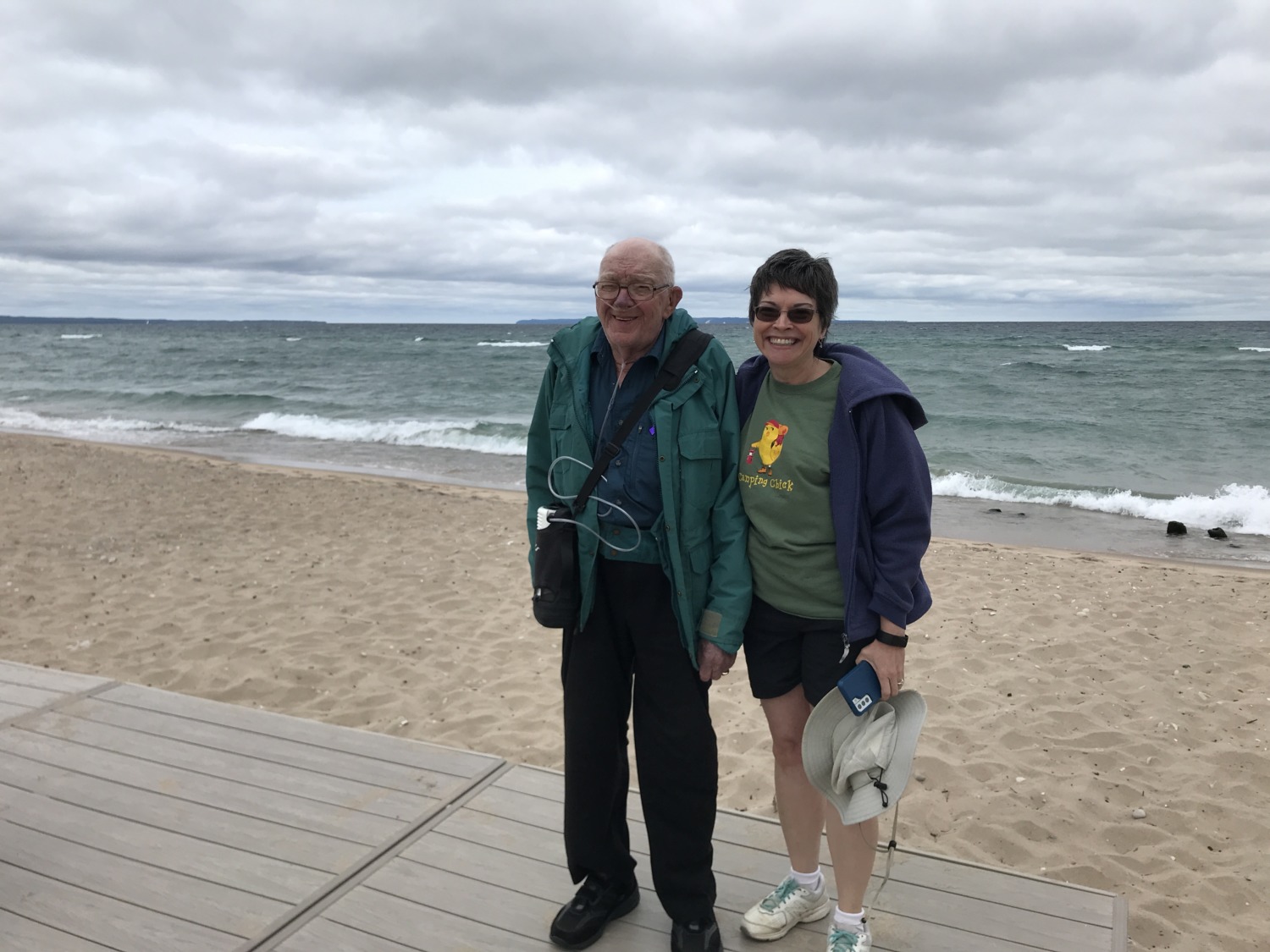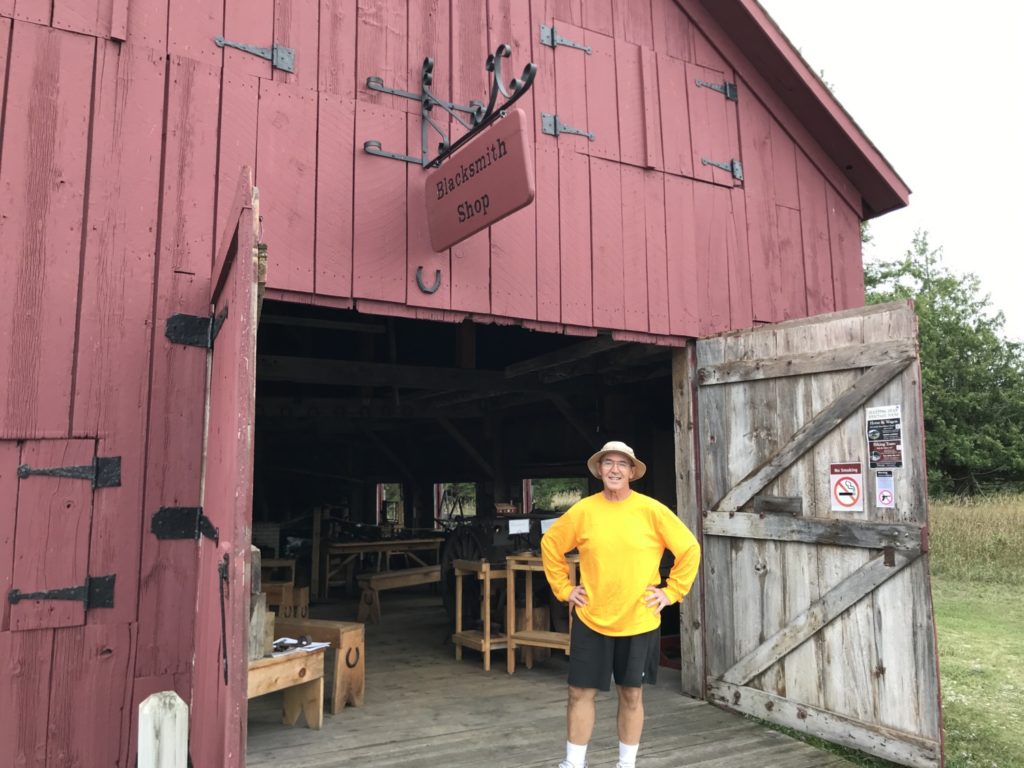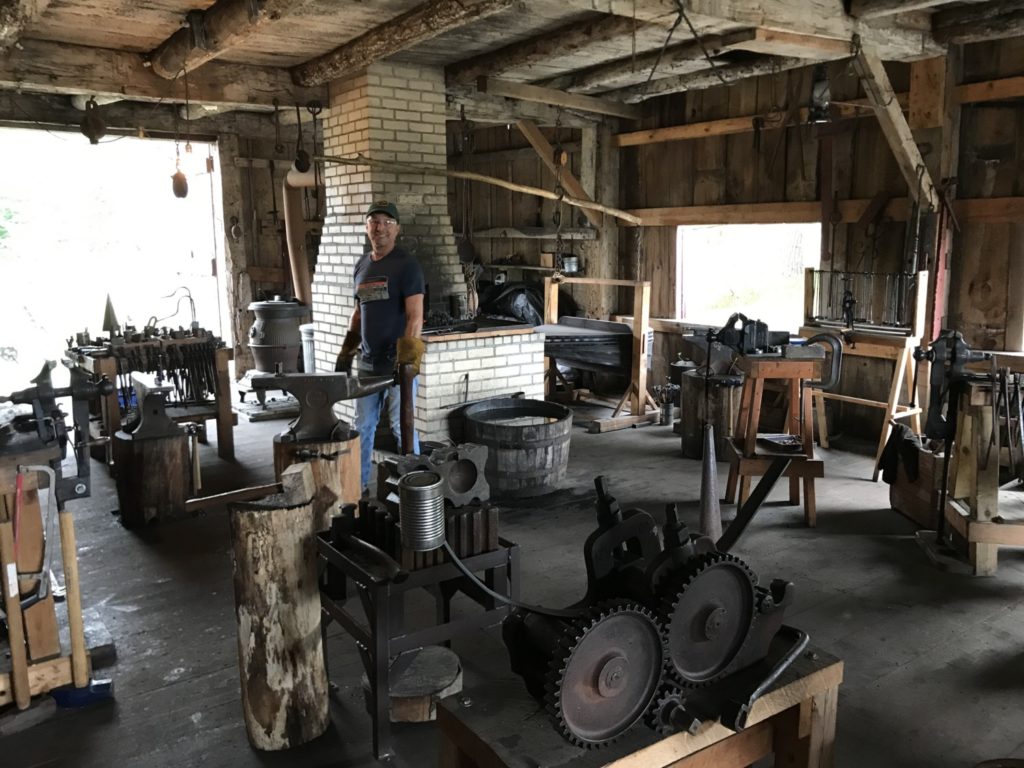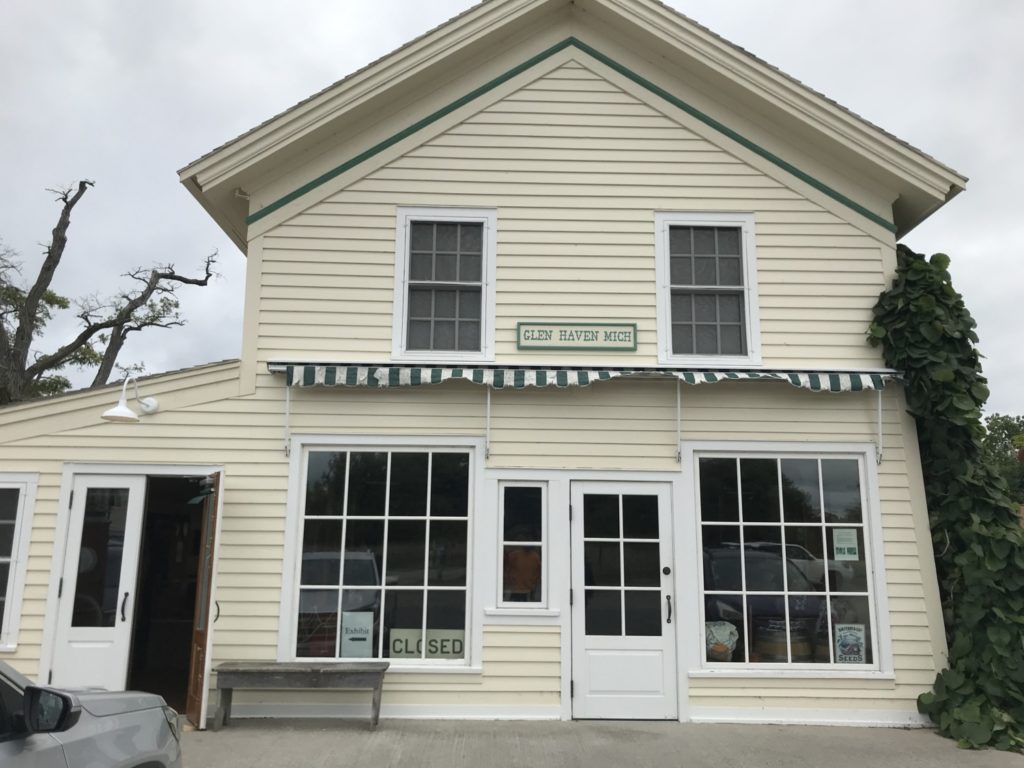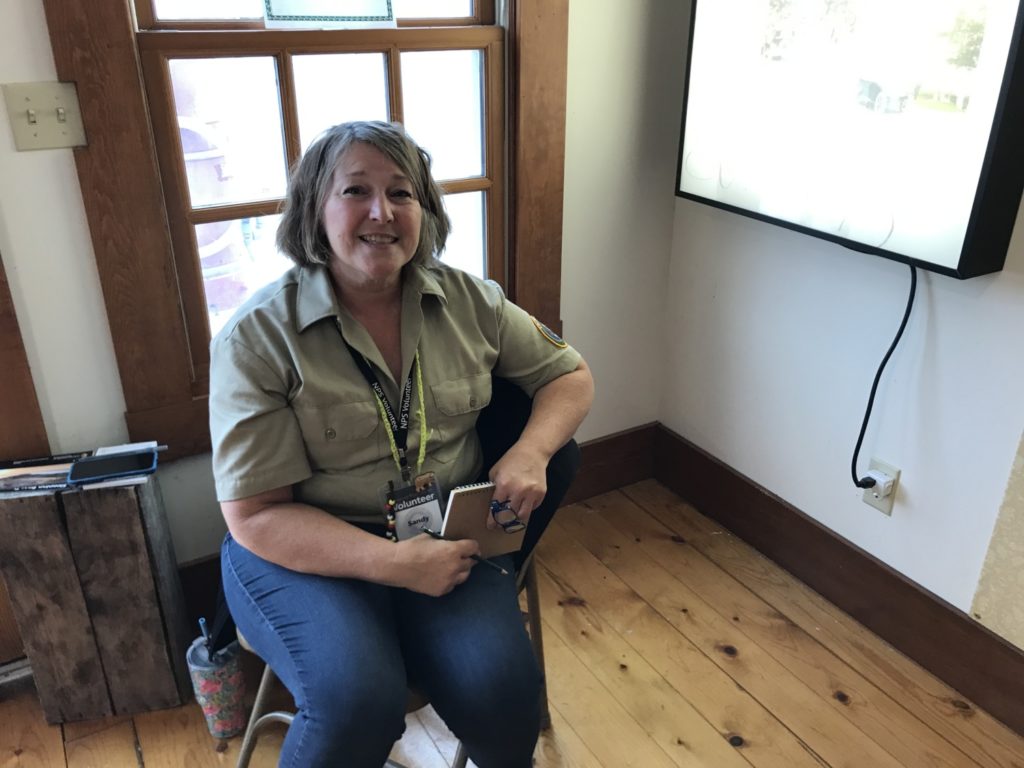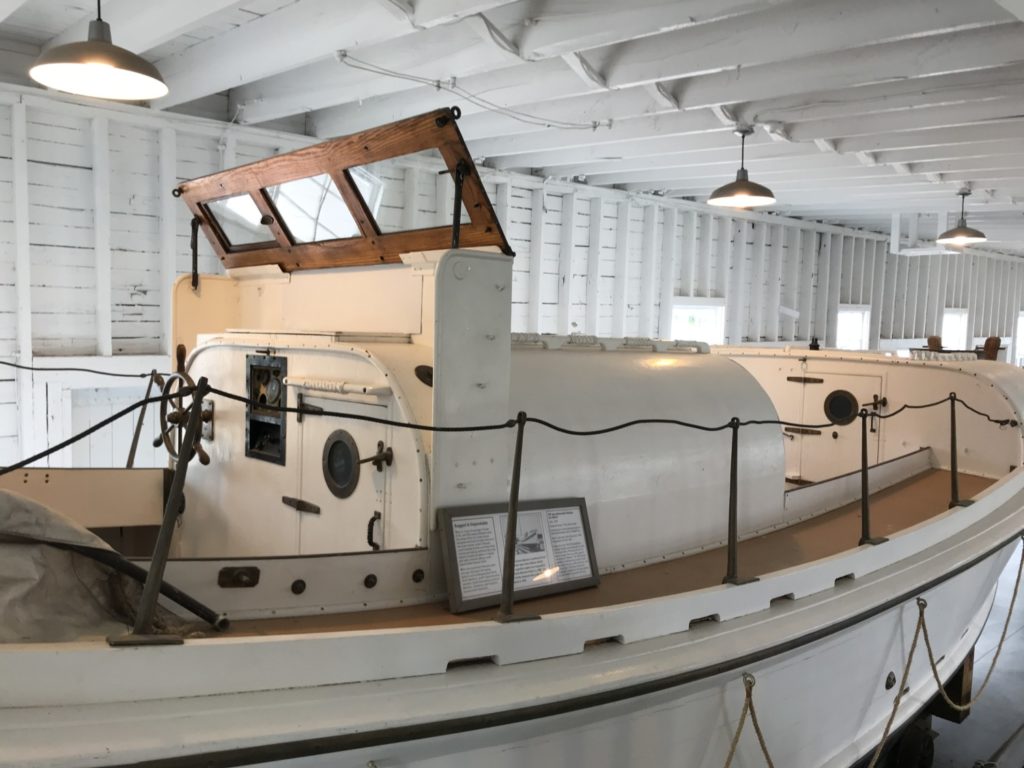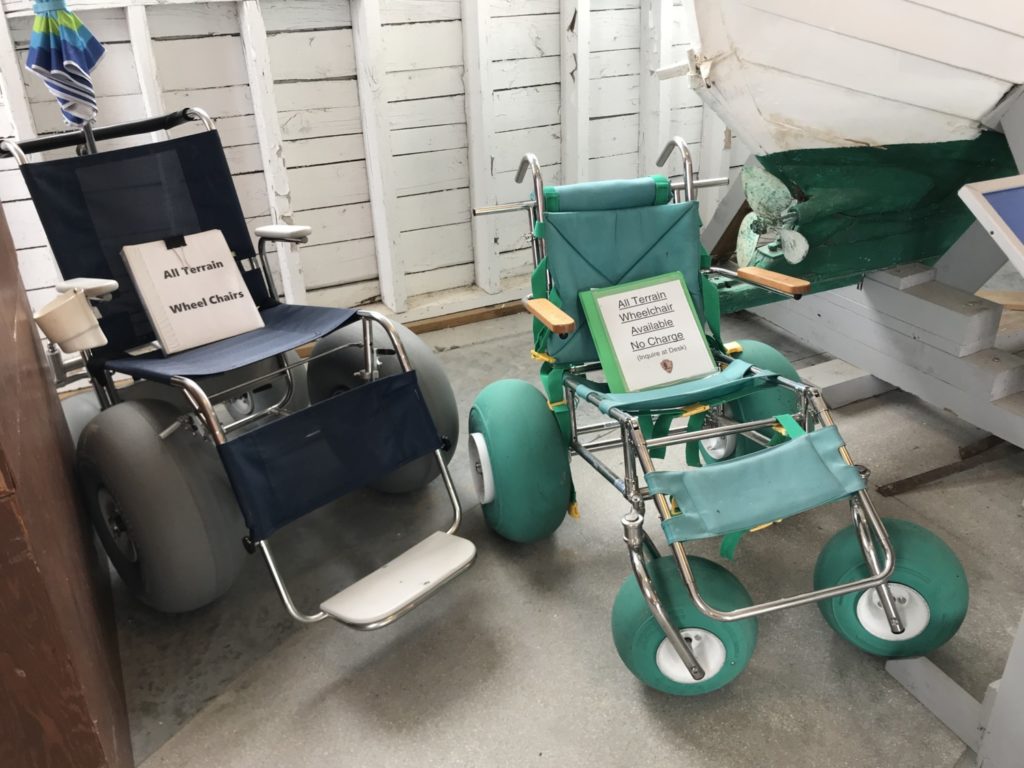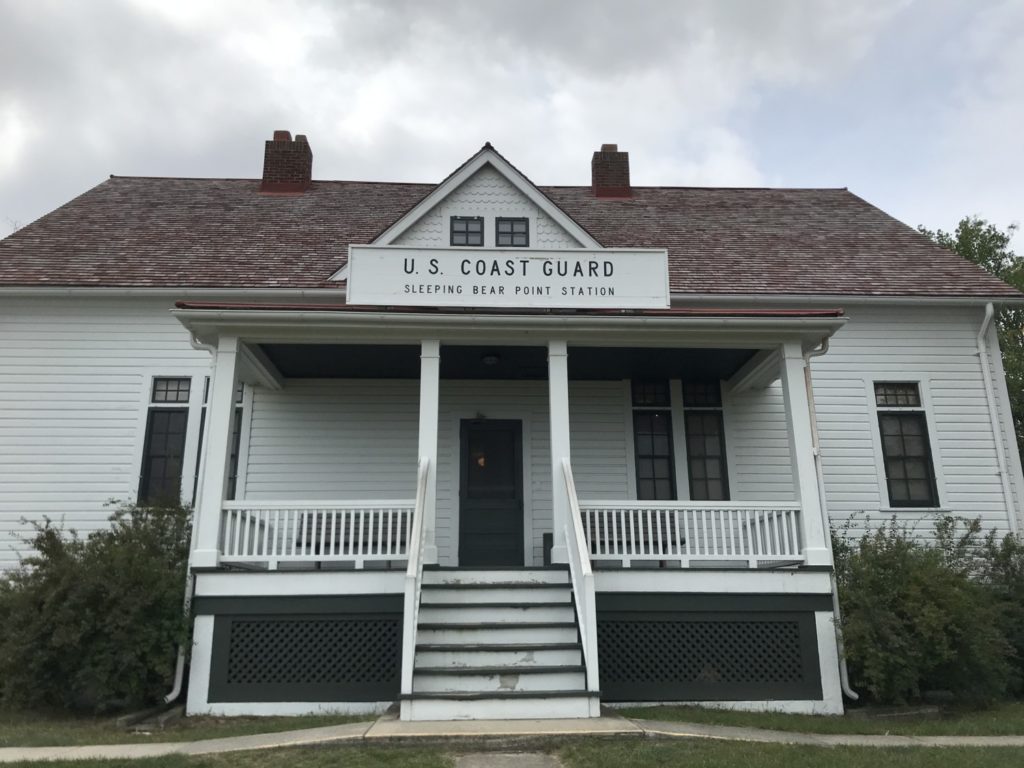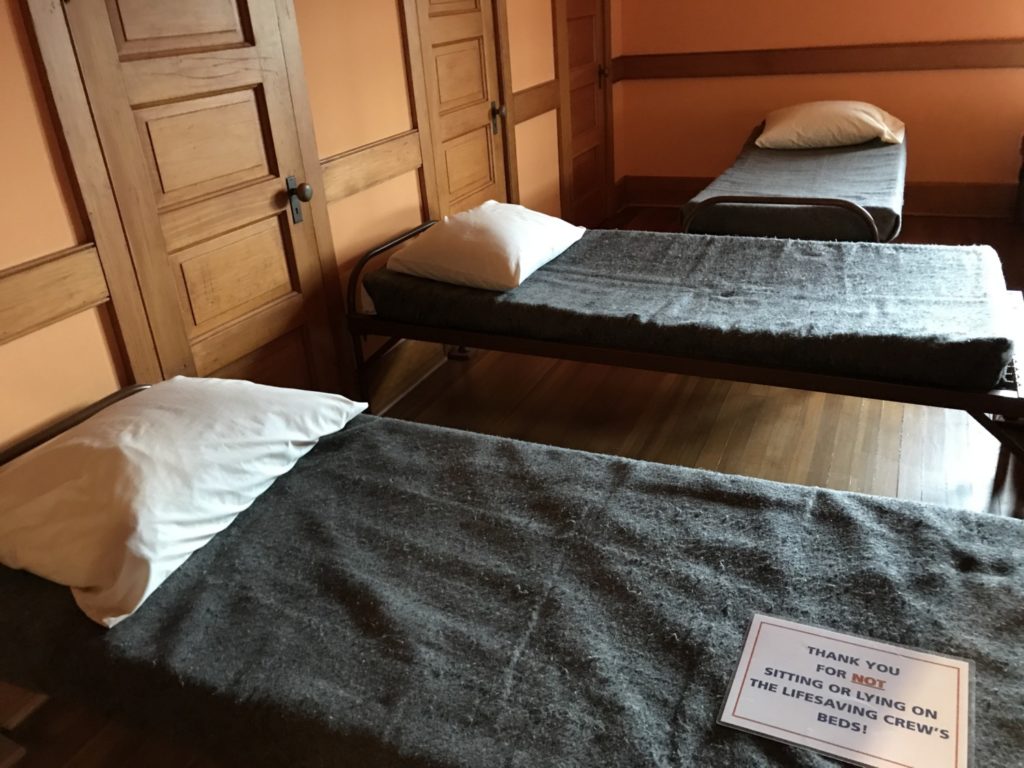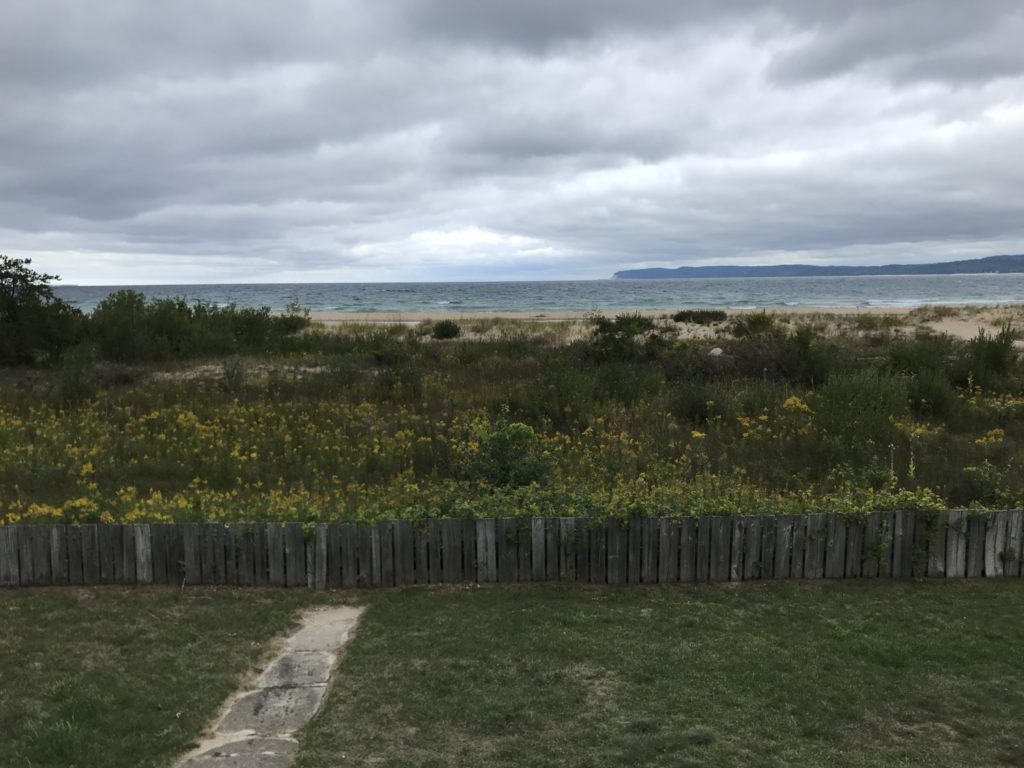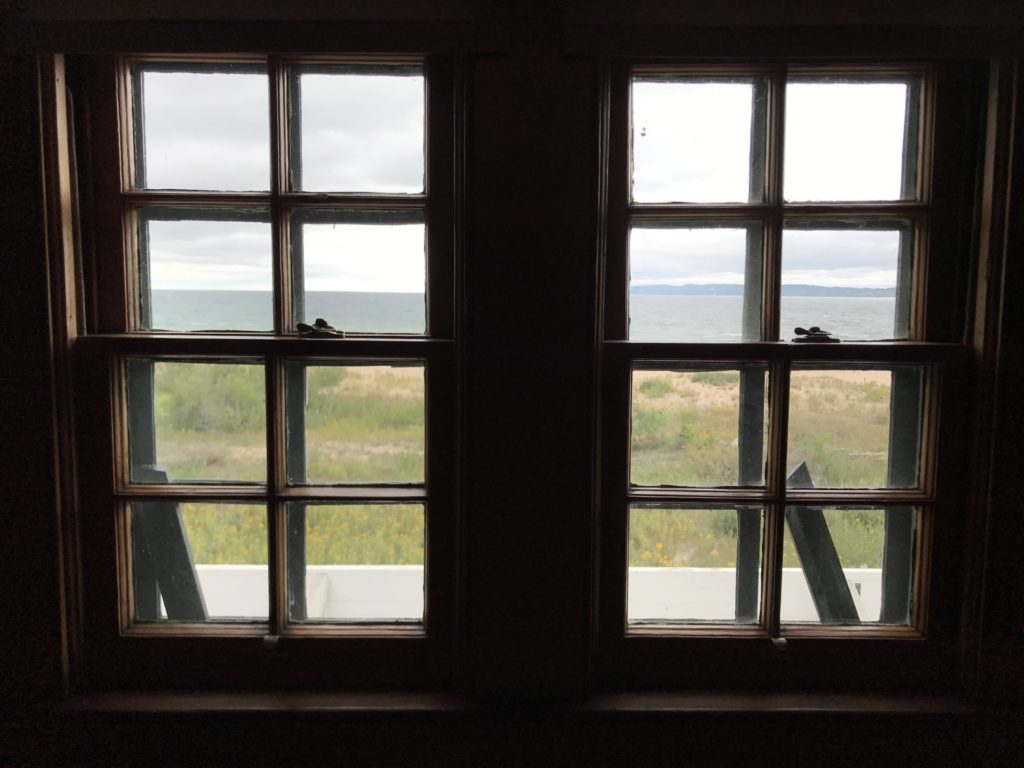Sleeping Bear Dunes National Lakeshore was established in 1970, which means that much of the land along the 35 miles of designated lakeshore was already privately owned. In order to preserve the land, the park service gradually bought up the private properties. One of these private properties was the town of Glen Haven on the northwest coast of the lakeshore. Glen Haven was the second place we visited in Sleeping Bear Dunes.
There are two historic towns within Sleeping Bear Dunes National Lakeshore. Port Oneida is further north and east but it was already closed for the season when we were there. Glen Haven stayed open through the end of September. We drove north to Glen Haven to check it out.
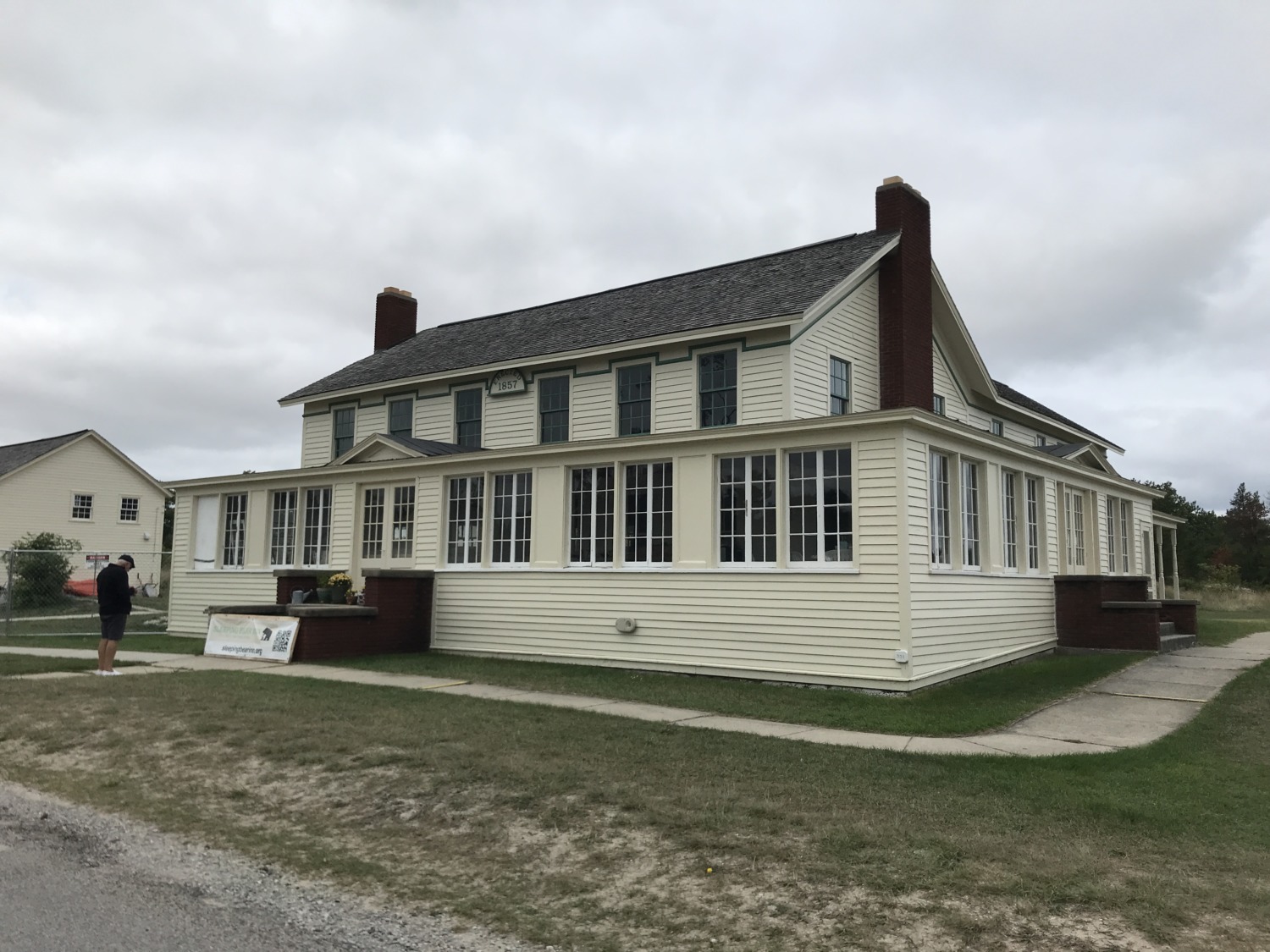
Glen Haven was a company town. Although the first inn was built there in 1851, most of the people who lived and worked in Glen Haven worked for the Northern Transit Company. The Northern Transit Company had 24 ship that plied the Great Lakes. Glen Haven was a place for the ships to pick up supplies, especially lumber to run their steam engines. In 1878 D. H. Day was appointed to run Glen Haven, making sure wood was available for the ships and developing the town.
By 1881, Glen Haven had 11 buildings including the inn, store, blacksmith shop, wagon shop, and school. Day retained the deeds to all of the more than 100 lots in the village. The D.H. Day store, which also served as a telegraph office, was the General Store for the town. The second story of the store served as home for the Day family for some time. To the east of the store stood a granary and root cellar. To the north stood an icehouse where thick piles of sawdust kept as many as 5,000 blocks of ice weighing 150 pounds each frozen for summer use. The cutting of ice on Glen Lake was a major winter activity.
Near the dock was the Glen Haven Inn. The Inn provided housing for the lumberjacks and dock workers in a second story dormitory. The first floor had nicer rooms for businessmen and a dining room. The original red blacksmith shop is still standing and had a volunteer blacksmith in it the day we visited. Tom was very impressed with how well equipped the blacksmith shop was.
In addition to the town, Glen Haven was also the home of the Sleeping Bear Point Lifesaving Station. The Lifesaving Service was the predecessor to the Coast Guard. The motto of the service was “You have to go out but you do not have to come back.” The men who worked the lifesaving stations went out in the worst storms to rescue sailors whose ships were in trouble. They could launch a boat or shoot the Lyle Gun to rescue sailors. The Lyle Gun was the preferred method because it was less dangerous for the lifesaving personnel. A small canon was fired with a line to attach to the ship. Then a breeches buoy would be hauled out to the ship and the sailors could ride it to the land.
We were fortunate to visit Glen Haven while it was still open. Sandy and Andy Castle were serving as RV volunteers at Glen Haven and opened the buildings each day. Mike was the volunteer blacksmith. Sandy talked to us while we were in the General Store and Andy talked to us in the Cannery Boat Museum. Glen Haven was their first NPS volunteer job and they were hoping to work at Fort Frederica in the winter. After talking to them, we put in a good word for them with the Fort Frederica folks. They would be a great addition to the team.
The best part of the historic town was the Lifesaving Station. We went to three different lifesaving museums while we were in Michigan, and the one in Glen Haven was definitely the best. When World War II started, the lifesaving station closed up, just as it was. When the National Park Service acquired the buildings in 1970, the Lifesaving Station was perfectly preserved with all its equipment still on the premises.
We really enjoyed walking around the town and checking out all the buildings. Bob Walliser, Sandy’s dad, was happy because he finally got to stand on the shore of Lake Michigan.
